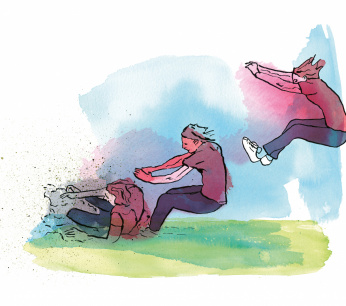This way you know all the names of students very quickly
"Er…, your neighbor." Learning student names. It is quite a task. Tips and tricks to remember them as soon as possible.

Image: Pixabay
After the first two or three lessons at the beginning of the school year, teacher Michiel Lucassen must know all the names of his students. He works at the X11 secondary school in Utrecht, where he teaches four to five classes a year. It is soon about a hundred names that he must have in mind. “It's easier for yourself if you know the names quickly,” says Lucassen. “It is an investment of you in the students. They immediately notice: this teacher sees me. As a result, they react differently and it makes it more personal. ”
So get those names in your head as soon as possible. But how do you do that? Neuroscientist and memory trainer Boris Konrad knows tricks and techniques and applies them himself. It earned him a world record for remembering names: 201 names with one entry in fifteen minutes Guinness World Records. The trick is to always create images in the head. Konrad: “Remembering is better when you come up with a striking image of a student. For example, do you have a Pete in your class. Then think in your head of a Pete from Sinterklaas. You see them in that image all year round, but that only happens in the head. With a Linda you can think of the presenter Linda de Mol who sits on a bench in the school. ”
It is your investment in the students. They notice right away: this teacher sees me. They react differently because of it and it makes it more personal
According to the memory specialist, teachers can already get started if they receive the list of names from their school leader. At that moment they can already 'prepare' images for the names. That's better than doing nothing at all. If you see the student afterwards, you must link the image to that person.
Learning means that your brain makes new connections. When you use images, the brain makes even more connections, especially with those parts that remember images. Recalling images is a good thing to do. "You use your brain in a more original way," says Konrad.
In addition, training is important, according to the memory expert. Teachers can easily do that in the classroom. “When the students work for themselves, teachers can test whether they know the names. Go through the students briefly in your head and ask yourself which names am I still missing? With this you train yourself again. Often people see that it takes very little time. Anyone can do this, but it is a matter of training. ”
symbool
In practice, it works well for teacher Lucassen to use names continuously in class and especially to repeat the names. “Then I ask a student something and say his name in that sense. I also mention the name in the three sentences that follow. ” Asking questions also helps. "For students whose name I don't know or remember well, I ask, for example: where does your last name come from or do you like football?"
In his mentor class, Lucassen thinks he should know the names very quickly. “Basically just after one lesson. That is the class with which you have the best connection. ” He is playing a game with these students. “I consciously link the students to a movement they make,” says the teacher. The students stand in a circle and tell their names and something else. “For example: I am Pim and I love football. Pim then makes a kicking movement. The next student likes graffiti. I have to name everyone last. It often helps me because I know the movement and you also get to know more about your student. ”
For teacher Lucassen it works well in practice to use names continuously in class and especially to repeat the names
Nameplates
And the well-known name plates? “It doesn't work for me,” says Lucassen. “But if you use it, I would ask students to add another symbol. Then you have a visual aid that helps you remember. ” Memory trainer Konrad also rejects nameplates. "It is not a learning method, because the name can already be seen and you do not know whether you know the name because it is there or whether you are retrieving it yourself."
You do not remember every name quickly. Lucassen: “You quickly know the names of students that you have to warn often. Just like the name of someone who helps well or comes up with something special in a lesson. ”
Still, despite all the tricks, he also confuses students, because they are similar in behavior, for example. That class list with photos always remains a temptation. Lucassen: “Yet you just have to find out yourself as soon as possible. Don't do things on autopilot. Then students drop out anyway. ”


